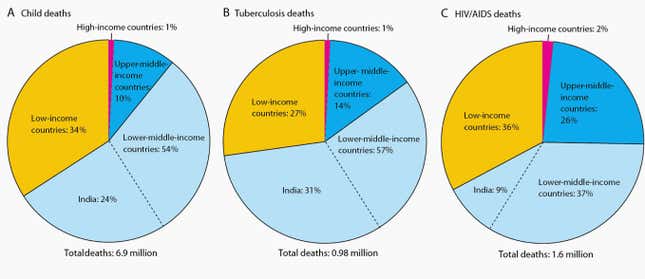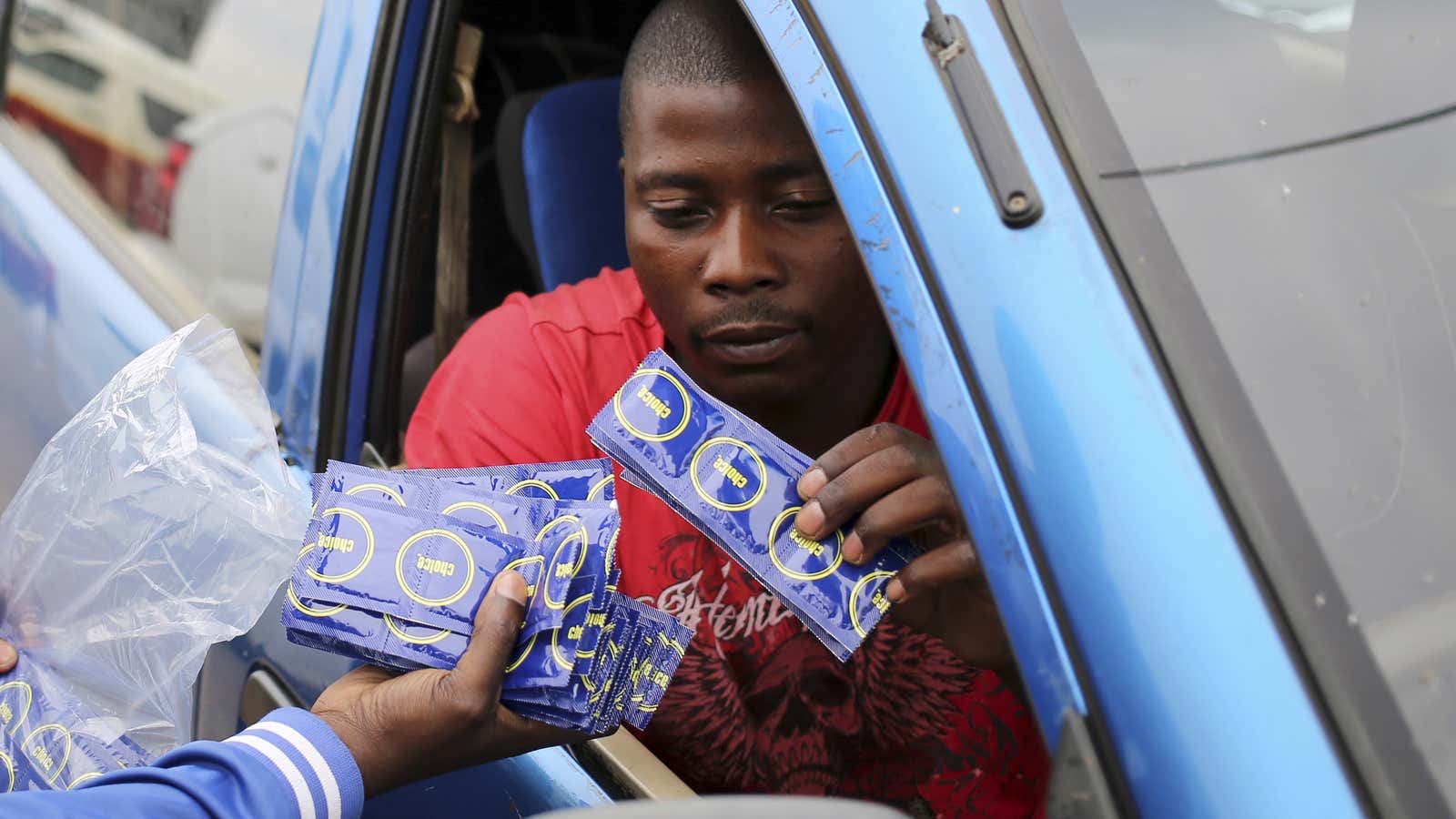If I told you that we could save the lives of, say, 10 million people, mainly by doing things we already know how to do, that would get your attention, right?
Well, it turns out that this is the number of people the world can save from dying of tuberculosis over the next 15 years. The figure comes from a study published in The Lancet that looked at what’s possible if the world invests more in global health.
The report (which our foundation funded) concludes that with the right investments, the world can essentially close the health gap between rich and poor countries. Such a convergence would represent a historic achievement, and a significant improvement in the human condition.
In these pie charts from that report, you can see the disproportionate deaths from treatable conditions that low-income countries endure, compared to rich ones:

So, what are these “right investments”?
It’s all straightforward stuff. In the case of tuberculosis, we’re talking about faster and better tests, and getting people the right treatment at the right time—things we already know how to do, but that we don’t do in enough places around the world.
Consider HIV/AIDS. If the world can intensify its fight against this pandemic—by expanding access to the great prevention and treatment options already on the market, and perhaps developing some new tools along the way—we can prevent 21 million deaths over the next decade and a half.
Then there’s maternal health. By increasing access to family planning, pre-natal care, safe delivery, and other well-understood interventions, we can save the lives of 3.3 million women who would otherwise die over the next 15 years from complications related to pregnancy and childbirth.
Let’s pause for a moment and add all of this up. If we can prevent 10 million tuberculosis deaths, 21 million deaths from AIDS, and 3.3 million maternal fatalities, that comes to 34.3 million lives saved–a number roughly equivalent to the entire population of Canada.
Later this summer, I’ll write more about the levels of investment that might be required to bring about the kinds of life-saving outcomes I’ve mentioned here. For now, it’s enough for all of us to be aware that this is an opportune time for such thinking.
In September, the United Nations will come together to adopt the Sustainable Development Goals, or SDGs—a comprehensive set of targets to be reached by 2030.
This effort is the long-awaited sequel to the Millennium Development Goals (MDGs), which sharpened the world’s focus on the health and development needs of the poor.
For example, Ethiopia used the MDGs as a measuring tool for its progress on child mortality. That nation’s death rate for children under the age of five fell 67% from 1990 to 2012. A major factor in this improvement was the establishment of fairly simple clinics and health-extension services in remote rural areas.

Again, the key to progress was knowing what already works—and bringing those tools and techniques to more places, more reliably. If the world approaches the upcoming SDGs with the same emphasis on practical, measurable solutions, we may see some extraordinary advances in human well-being over the next 15 years.
But while it’s the world’s governments that will shape the SDGs, individuals like you can make a real difference in improving global health and fighting extreme disease.
In our annual letter this year, my wife Melinda and I encouraged readers to join Global Citizen, a highly effective worldwide campaign to address these issues and help ensure a more sustainable future for humanity. I ask that you take a moment to sign up.
By demonstrating your support for necessary investments in global health and global development, you will literally be helping to save millions of lives around the world.
That’s what’s at stake in 2015–and in the decade and a half to come.
